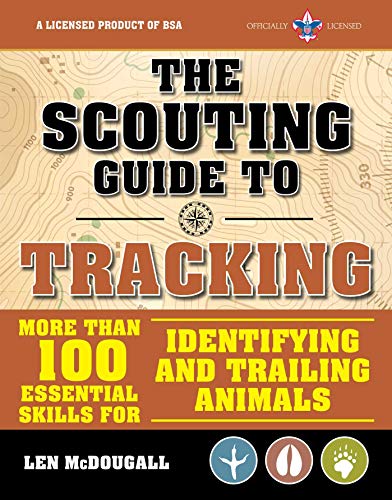




The Scouting Guide to Tracking: An Officially-Licensed Book of the Boy Scouts of America: More than 100 Essential Skills for Identifying and Trailing Animals
P**R
What can I say... this book is full of incorrect information.
I rarely (actually this is my first time) post a negative review of anything. If I find a book or product I don't like I just keep my displeasure to myself. However, in this case, I feel I have an opportunity to prevent a lot of confusion that will result if someone new to animal tracking buys this book and hopes to improve their skills by reading it. I purchased it because I want to help scouts learn about tracking animals. I have returned this book to Amazon for a refund. It is that bad.As a lifelong supporter of the BSA I am surprised and saddened that this book is advertised as “officially licensed” by the BSA and purports to be a guide to teach scouts how to track. Fortunately the BSA guide for the Nature merit badge currently lists some some excellent reference books on tracking. This book should absolutely NOT be added to that list. There may be a lot that is correct about this book, but the portions I read are so egregiously incorrect that I find it difficult to understand how this book got published.So yes - disclaimer... I didn’t read the whole book. I went first to the chapter on felines because this is an area where a lot of confusion is present in the rural area where I live, and many people spread false information about how to differentiate a mountain lion track from a dog track. If they would just read a book on animal tracking they could learn the difference, unless they chose this book. The chapter on felines has no drawings and only three photographs of feline tracks. Two of the photographs are, in fact, canine tracks, and are labeled as mountain lion tracks. The other photograph is labeled as a “right front” lynx track, but is actually a left track. The book does not have a single photograph or even a drawing of a bobcat track, even though the bobcat is by far the most common wild feline we have.I was almost in disbelief at this point and then looked up squirrel, the most common track most of us see. There is not a single photograph of a squirrel track, only a crude drawing. I’m being generous when I say that the drawing is marginally correct. Here’s why… the author got the number of toes right, but the heel pads of squirrels have a very distinctive pattern which beginning trackers are taught to burn into their brain and never forget. That pattern is shown incorrectly in the drawing.At this point I decided I didn’t have time to read any further. It may be that everything else in this book is correct, but I doubt it, and the mistakes I found are so bad that I have no faith that the remainder of the book is any better. The incorrect information in the chapter on felines alone, does such a disservice to efforts to educate the public on this topic that the book, in this instance, has the potential to do more harm than good. I believe if you read this book to learn about tracking, it will set you back and you will become confused and have to relearn material. There are dozens of other books on tracking that you can learn from. Some of them contain a few errors, but I have never ever seen a tracking book so grossly flawed as this one. Don’t buy it.
M**T
Tracking animals on trails and into the wild.
Scouting Guide to tracking book is very interesting. Patterns, habitat, scents, signs, scats and behaviors of moose, elk, deer, caribou, pig, wolf, fox, coyote, cougar, bobcat, bear, raccoon, squirrel, rabbit and porcupine.Very easy and interesting reading.
S**C
He can’t wait to use it!
My grandson was delighted with this!
1**O
very basic
good info just not a lot of it.
Trustpilot
1 week ago
1 day ago